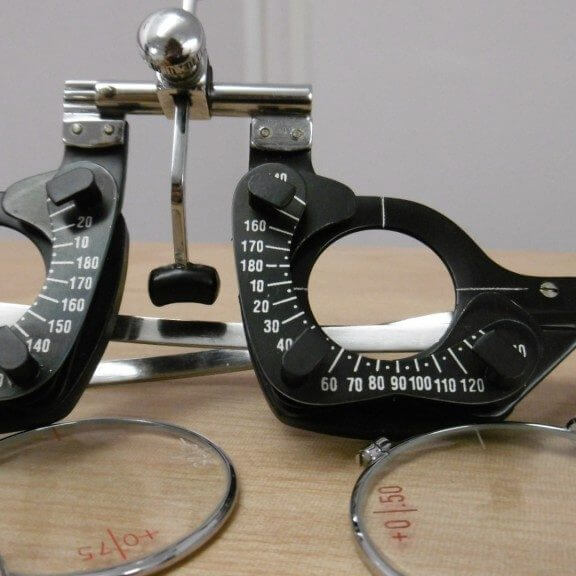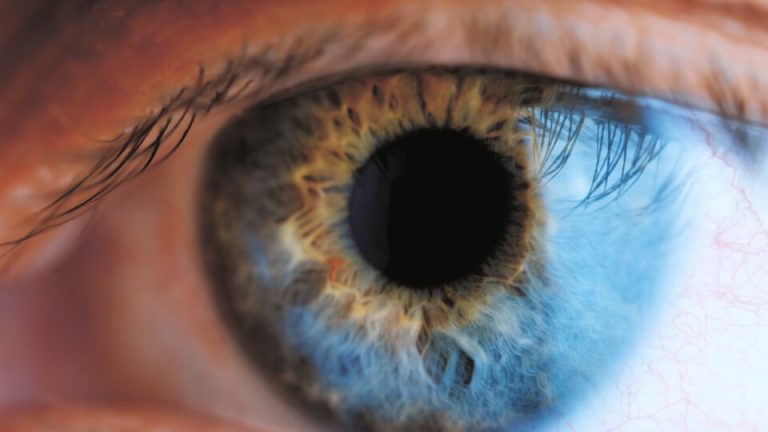Back of the Eye
Floaters
Floaters are condensations within the vitreous gel. This is a jelly-like component of the eye, located behind the lens and in front of the retina. Floaters are normal in most people. However, a sudden increase in floaters can be a sign of collapse in the vitreous gel, called a Posterior Vitreous Detachment or PVD. This happens in most people at some stage of their life. It can lead to more serious complications such as retinal tears or retinal detachment.
Flashes, floaters and retinal detachment.
Floaters are a sign of condensations in the vitreous gel, which is a jelly like component of the eye, located behind the lens and in front of the retina. Throughout your life, this jelly like substance gradually turns to a liquid and at some point will collapse in on itself. When this happens the jelly pulls away from the retina on the back of the eye. This is called a Posterior Vitreous Detachment or PVD. Symptoms of this include a sudden increase in floaters, often associated with flashing lights, or even a veil across part of your vision. Vitreous detachments can be completely harmless, however, they can also lead to a tear in the retina. A tear in the retina can lead to retinal detachment, where the retina peels off the back of the eye. Prompt treatment can prevent a retinal detachment if there is a retinal tear. This is done by using a laser that ‘spot welds’ the area around the tear. Retinal laser can be performed by one of our ophthalmologists at Northpoint Eye Care.
Epiretinal membrane
An epiretinal membrane occurs where a fibrous tissue layer settles on the macula, the central part of the retina responsible for detailed vision. Epiretinal membranes have an appearance very similar to a small portion of cling wrap on the back of the eye. They are transparent, however, they can contract and cause distortion of the macula. This can lead to blurred or distorted central vision. Some epiretinal membranes do not require treatment and will be followed up by your ophthalmologist regularly, to detect for changes. Besides clinical examination, the best way to monitor this is via retinal photography and Optical Coherence Tomography or OCT. You will be asked to use an Amsler grid to detect for any central visual changes, and report these immediately to your ophthalmologist. Other epiretinal membranes will require treatment which involves removal of the jelly in the back of the eye with an operation called a Vitrectomy. In this operation, the epiretinal membrane is peeled from the back of the eye.
Retinal vein occlusion
Retinal vein occlusion can cause reduced vision throughout the field of view or in localised areas. Retinal vein occlusion is where there is a blockage in one of the veins of the retina at the back of the eye. This can be a blockage to peripheral vein called a branch retinal vein occlusion (BRVO), or a blockage to the main vein called a central retinal vein occlusion (CRVO). A retinal vein occlusion can lead to the formation of swelling at the macula, the central part of the retina responsible for detailed vision. This swelling is called Macular Oedema. A retinal vein occlusion can also lead to the formation of abnormal new blood vessels. Both of these conditions require treatment which includes intravitreal injections or retinal laser therapy. These treatments take place at Northpoint Eye Care, where your ophthalmologist will continue to monitor and treat you as required. Besides clinical examination, the best way to monitor a vein occlusion is via retinal photography and Optical Coherence Tomography or OCT. You will be asked to use an Amsler grid to detect for any central visual changes, and report these immediately to your ophthalmologist.
Macular Hole
The vitreous gel is located between the lens and the retina in the back of the eye. This jelly gradually turns to liquid throughout your life time. Once it reaches a certain point, it collapses on itself, this called a Posterior Vitreous Detachment (PVD). Incomplete areas of detachment occur, with adherence at the macula, the central part of the retina responsible for detailed vision. This is called Vitreo-macular Traction (VMT). Traction on the macula can lead to the formation of a hole at the macula. This is called a Macular Hole. A macular hole can lead to the loss of your central vision. This can be sudden or gradual. VMT and a macular hole may require treatment via a surgical procedure called Vitrectomy. Besides clinical examination, the best way to detect and monitor VMT and a macular hole is via Optical Coherence Tomography or OCT. If you have VMT or if you are at risk of a macular hole, you will be asked to use an Amsler grid to detect for any central visual changes, and report these immediately to your ophthalmologist.
Pigment Epithelial Detachment
A pigment epithelial detachment (PED) is a collection of fluid or debris beneath the macula, the central part of the retina responsible for detailed vision. The pigment epithelium is the deepest layer of the retina. This collection of debris or fluid can lead to a change to the central vision which can be blurred or distorted. A PED is commonly associated with macular degeneration and will occasionally require treatment with intravitreal injections. These treatments take place at Northpoint Eye Care, where your ophthalmologist will continue to monitor and treat you as required. Besides clinical examination, the best way to monitor a PED is via retinal photography and Optical Coherence Tomography or OCT. You will be asked to use an Amsler grid to detect for any central visual changes, and report these immediately to your ophthalmologist.
Central Serous Retinopathy
Central serous retinopathy, or CSR, is a condition where there is swelling usually at the macula, the central part of the retina responsible for detailed vision. This condition usually resolves by itself, however, it may require treatment. Your ophthalmologist will continue to monitor and treat you as required. Besides clinical examination, the best way to monitor a CSR is via retinal photography and Optical Coherence Tomography or OCT. You will be asked to use an Amsler grid to detect for any central visual changes, and report these immediately to your ophthalmologist.
Choroidal naevi
A choroidal naevus is similar to a mole on the skin. It occurs in the pigmented layer of the eye, behind the retina, called the Choroid. Just like any mole on your skin, there is a small chance that this can change to be a melanoma. For this reason most choroidal naevi will need ongoing monitoring. Besides clinical examination, the best way to monitor a choroidal naevus is via retinal photography and Optical Coherence Tomography or OCT.
E-BOOKS







